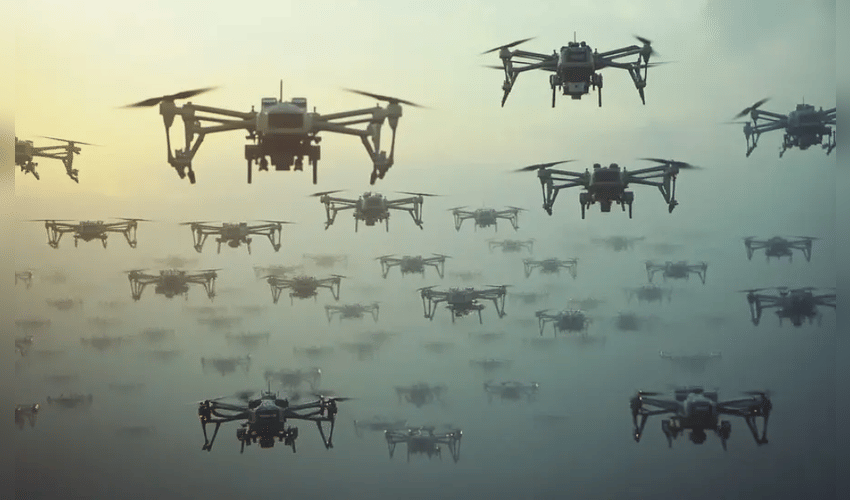News
IIT Bombay Innovates GPS-Free Swarm Control for VTOL Drones Using Only Onboard Cameras

Researchers at IIT Bombay have made a significant breakthrough by developing a novel GPS-free swarm control system for Vertical Take-Off and Landing (VTOL) drones, relying solely on camera-based bearings. This innovative approach allows a fleet of drones to autonomously maintain formation and coordinate movements without using GPS signals, inter-drone communication, or centralized control systems — a leap forward for drone operations in GPS-denied or communication-restricted environments.
The research team, led by Professor Dwaipayan Mukherjee and research scholar Chinmay Garanayak, devised a "bearing-only" control scheme. In this method, each drone uses its onboard camera to visually detect the relative direction, or bearing, of neighboring drones. This vision-based data becomes the sole input for controlling the swarm's formation and alignment. Since GPS signals are susceptible to jamming or spoofing and communication links can be unreliable or risky in hostile areas, this camera-only approach increases the robustness, stealth, and autonomy of drone swarms.
VTOL drones, capable of vertical takeoffs and hover capabilities, present complex control challenges due to their underactuated nature—they have six degrees of freedom but fewer independent control channels, requiring sophisticated algorithms to manage motions like lateral shifts, pitch, and yaw. The IIT Bombay team addressed this by incorporating a full dynamic model of the VTOL drones, improving stability during complex maneuvers and making the swarm adaptable for real-world, dynamic missions.
Two operational modes have been demonstrated successfully: a constant-velocity formation where drones maintain a fixed pattern based on bearing and bearing-rate data, and a time-varying formation mode where drones dynamically adapt their positions by also using their velocity information. This flexibility enables the swarm to reconfigure on the fly, switching formations based on mission needs such as surveillance in urban environments or constrained spaces.
Beyond technical elegance, this system offers practical benefits. Eliminating GPS and communication modules reduces drone weight and power consumption, leading to longer flight times and lower costs. The reliance on camera data, which is less noisy than traditional distance sensors, simplifies the sensor requirements and enhances overall reliability, especially in GPS-denied zones like dense urban areas, forests, or military battlefields. Moreover, it enables stealthier operations since drones do not emit GPS or radio signals that adversaries could detect or jam.
The researchers aim to test the system in real-world swarm flight trials and develop mathematically guaranteed collision avoidance algorithms, pushing towards completely autonomous, resilient drone swarms capable of safe navigation without external inputs. This advancement could revolutionize drone swarm applications from disaster response and environmental monitoring to covert military missions where GPS and communications are compromised.
IIT Bombay's camera-based, GPS-free control system using bearing-only data represents a cutting-edge innovation, enhancing drone swarm autonomy and resilience in challenging environments. Such advancements are critical as drones become increasingly integral across civilian, commercial, and defense sectors — ushering in smarter, more reliable aerial robotics.



